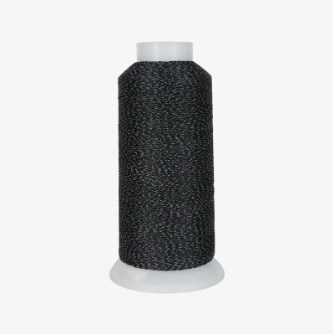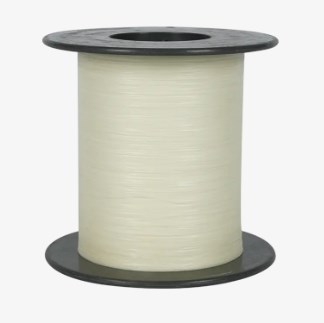As an important branch of the modern textile industry, functional yarn is changing the way traditional textiles are applied. With consumers' increasing demands for comfortable, healthy, and intelligent clothing, functional yarn, with its unique performance advantages, has become a crucial core of textile design and technological innovation.
Definition and Development of Functional Yarn
Functional yarn refers to textile raw materials that possess specific functions through modified fibers, composite structures, or finishing processes. These yarns not only provide the support function of traditional textile fibers but also achieve multiple functions such as antibacterial properties, UV protection, moisture wicking, flame retardancy, electrical conductivity, and temperature regulation. With the application of polymer materials technology and nanotechnology, the research and development of functional yarn is evolving from single-function to multi-functional integration, providing more possibilities for textile design.
The development of functional yarn has undergone an evolution from basic functionality to high-tech intelligence. Early functional yarns focused primarily on single properties such as waterproofing, oil resistance, and antibacterial properties. Modern yarn technology, however, incorporates sensor materials, far-infrared materials, and phase change materials into yarn production, achieving fiber-level intelligent functionality. This not only meets the high-performance demands of sportswear, medical textiles, and outdoor equipment but also opens up new creative possibilities for fashion textiles.
Classification and Characteristics of Functional Yarns
Based on their functional characteristics, functional yarns can be divided into three main categories: physically functional yarns, chemically functional yarns, and intelligent yarns. Physically functional yarns alter the yarn's thermal conductivity, moisture absorption, and elasticity through fiber structure design and processing techniques, enabling the yarn to exhibit specific functions in clothing or industrial fabrics. Chemically functional yarns rely on fiber surface treatments or the blending of functional additives to achieve chemical protective properties such as antibacterial, UV protection, and flame retardancy. Intelligent yarns integrate microelectronics, nanomaterials, and polymer intelligent materials to achieve advanced functions such as temperature regulation, photoelectric response, and health monitoring.

The characteristics of functional yarns lie not only in their functionality but also in their processability and adaptability. High-performance yarns need to maintain stability throughout the spinning, weaving, and dyeing processes while preserving their functionality in the finished textile product. This means that designing functional yarns is not only a challenge for materials science but also a test of textile engineering technology.
Applications of Functional Yarns in Textiles
The applications of functional yarns in textiles are widespread and continuously expanding. In sportswear, moisture-wicking and quick-drying yarns enhance the wearing experience, while antibacterial and odor-resistant functions meet daily hygiene needs. In medical and nursing textiles, the use of antibacterial, antiviral, and breathable yarns ensures product safety and comfort. In outdoor and industrial fabrics, waterproof, UV-resistant, and flame-retardant yarns improve the durability and safety of textiles.
With the maturity of smart fiber technology, functional yarns are also widely used in wearable devices and smart clothing. Conductive yarns, temperature-controlled yarns, and photoelectric sensing yarns enable data interaction with electronic devices, transforming clothing from a traditional wearing tool into an intelligent platform for health monitoring, exercise management, and even environmental sensing. This cross-industry integration is driving the transformation of textiles from traditional materials to high-tech smart materials.
Production Process of Functional Yarns
The production of functional yarns involves multiple stages, including fiber modification, yarn spinning, and post-processing. In the fiber modification stage, basic fiber functionality is achieved through chemical, physical, or blending modifications. In the yarn spinning stage, technologies such as twisting, composite yarn, and covered yarn are used to effectively combine functional materials with the base fibers. Post-processing includes coating, impregnation, and heat treatment to further enhance the specific properties of the yarn. Each stage has a decisive impact on the final performance of the functional yarn; therefore, the production process requires strict control of process parameters and quality standards.
Market Trends of Functional Yarns
With the increasing global demand for high-value-added products in the textile market, the market size of functional yarns continues to expand. Consumers' focus on comfort, health, and sustainable development has driven the diversification of functional yarns. Simultaneously, technological innovation has accelerated the R&D cycle of new functional yarns, leading to wider applications of functional yarns in high-end apparel, home textiles, industrial fabrics, and smart wearable devices. Sustainability and environmental friendliness have become important directions in the research and development of functional yarns, with high-performance and recyclable functional yarns gaining market favor.

Functional yarns, with their diverse properties and broad application prospects, are leading the textile industry's transformation from traditional manufacturing to high-tech intelligent materials. With continuous technological advancements and upgrading market demands, functional yarns will demonstrate greater value in fields such as apparel, medical, outdoor, industrial, and smart wearables, becoming a significant driving force for innovation in modern textiles.

 English
English русский
русский Español
Español











